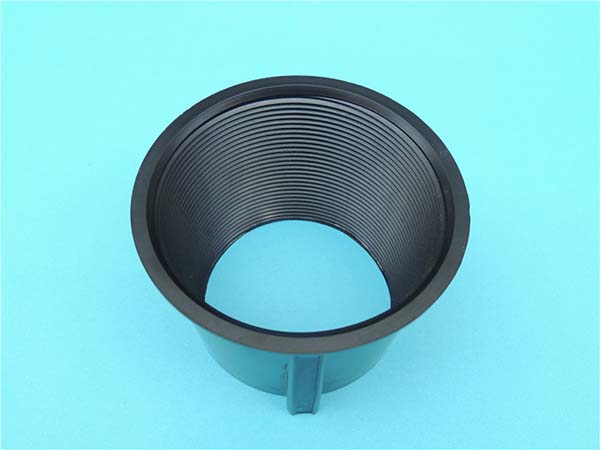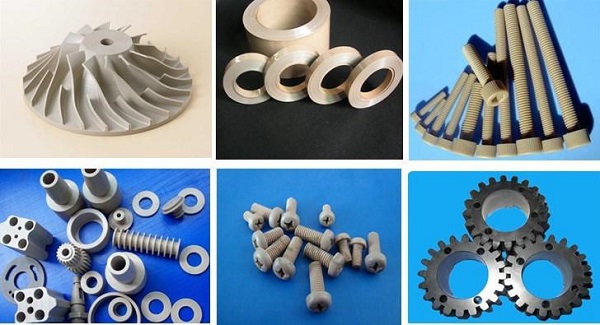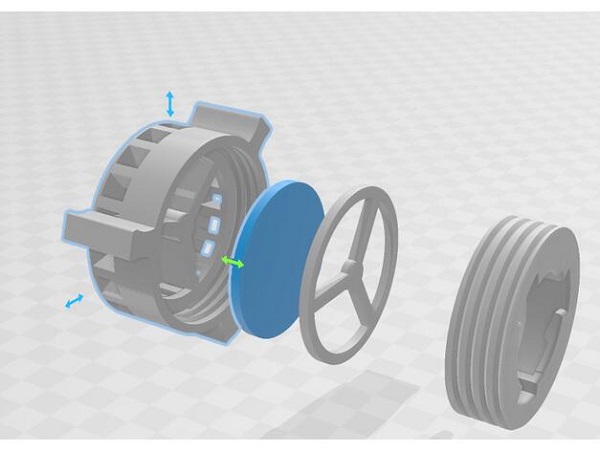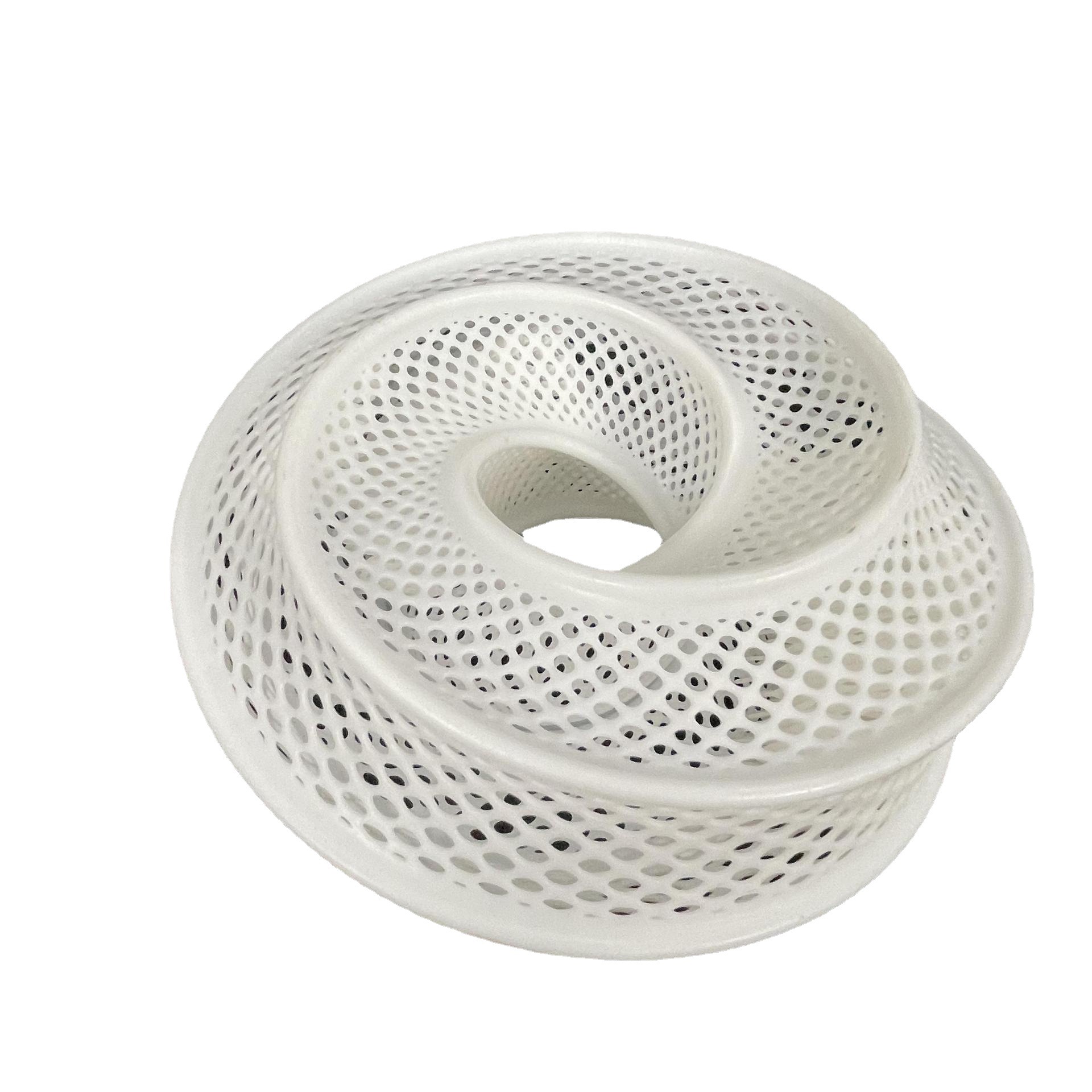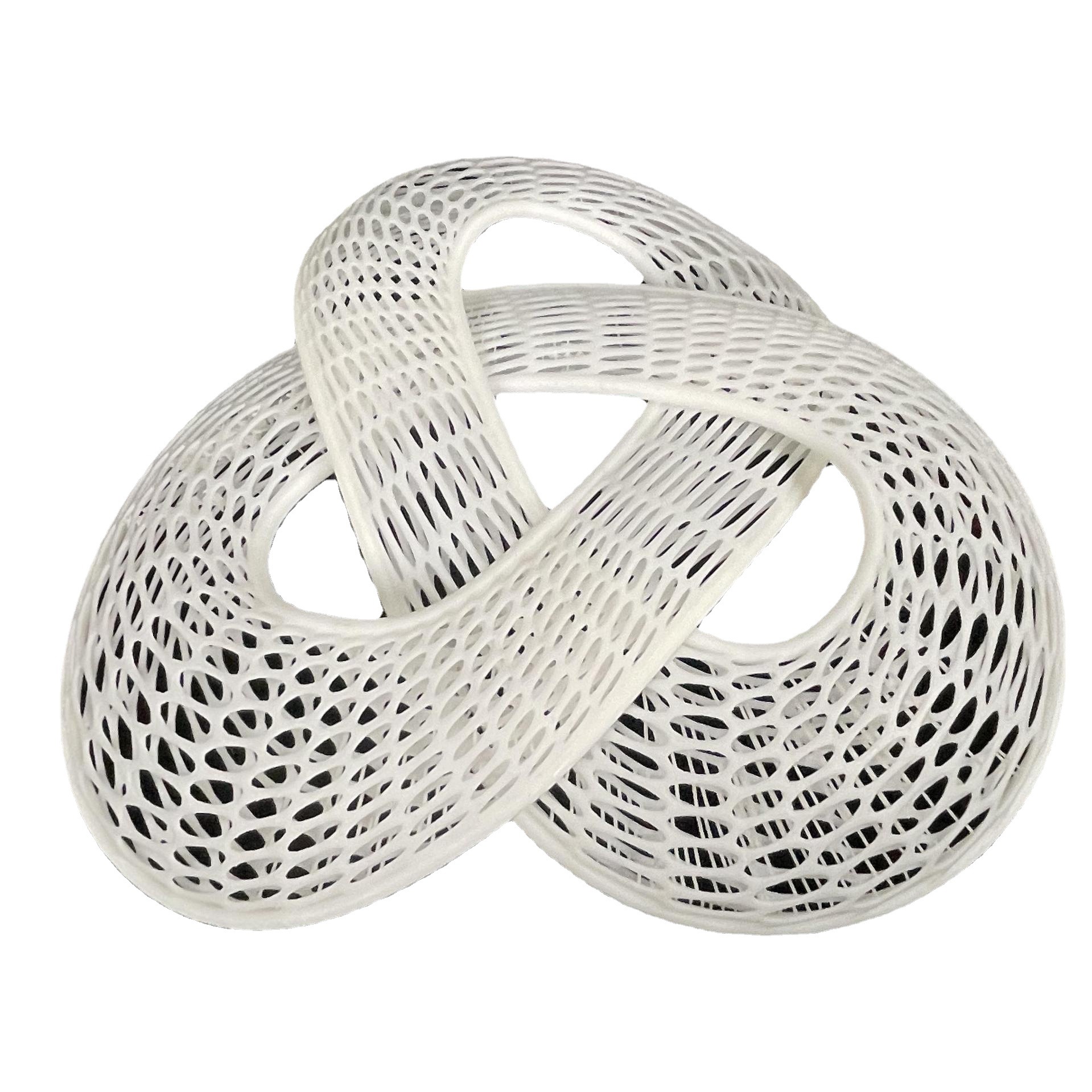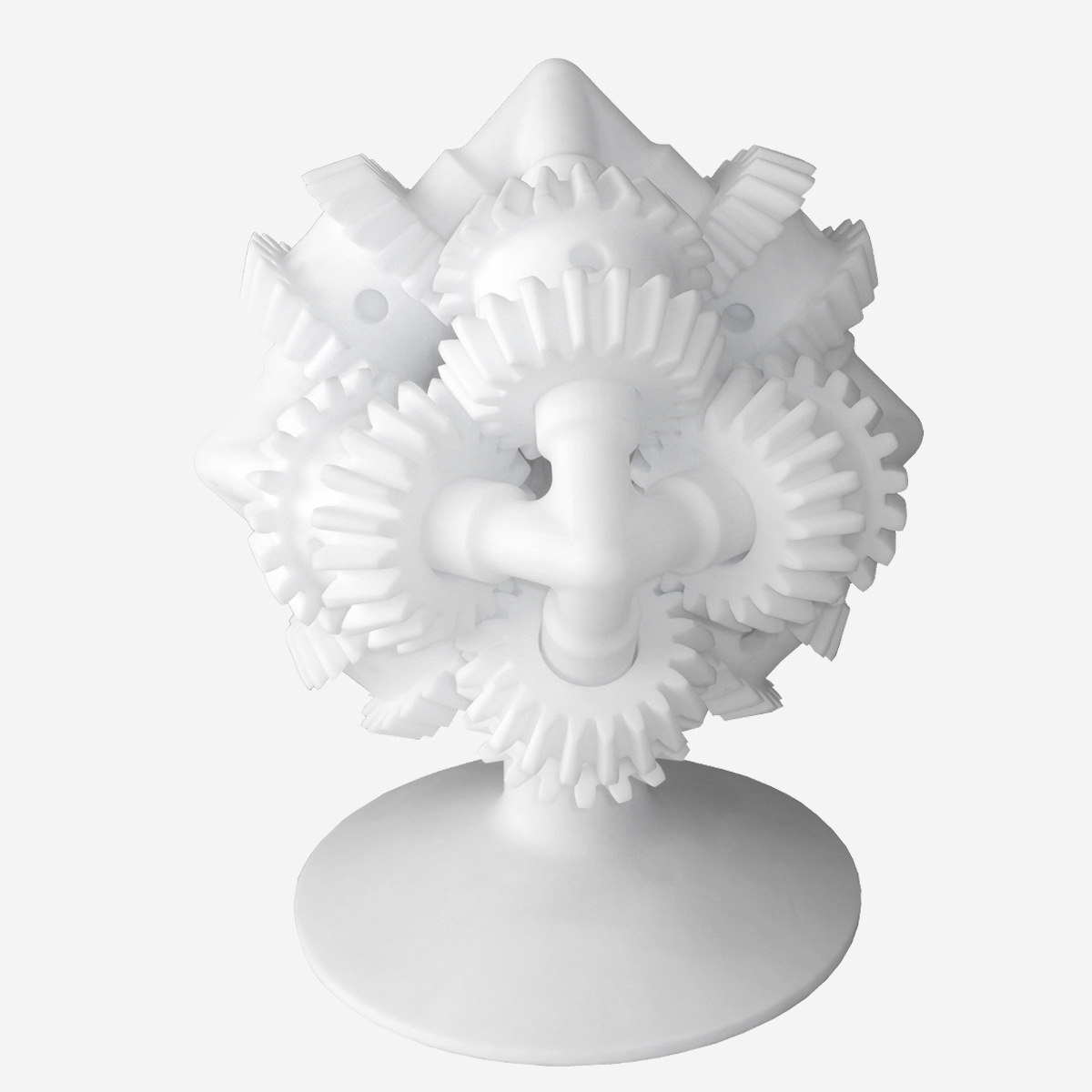Introduction
Definition and Basics of 3D Printed Industrial Parts
3D printed industrial parts, also known as additive manufacturing parts, are three - dimensional components created by layering materials based on a digital model. This technology departs from traditional subtractive manufacturing methods, which remove material from a larger block to create a part. Instead, 3D printing builds parts layer by layer, starting from a digital file such as a CAD (Computer - Aided Design) model.
The process involves feeding materials, which can range from plastics like PLA (Polylactic Acid) and ABS (Acrylonitrile Butadiene Styrene), to metals such as titanium and aluminum, or even composites, into a 3D printer. The printer then precisely deposits these materials according to the design specifications, fusing each layer together until the final part is complete.
Significance of 3D Printed Industrial Parts in the Industrial Landscape
In the modern industrial landscape, 3D printed industrial parts have become increasingly significant. Firstly, they offer unparalleled design freedom. Traditional manufacturing often has limitations in creating complex geometries. For example, parts with internal cavities or intricate lattice structures were extremely difficult and costly to produce using conventional methods. However, 3D printing can create these complex designs with relative ease. A study by Wohlers Associates found that in the aerospace industry, 3D printed parts have enabled the creation of lighter - weight components with optimized internal structures, reducing fuel consumption by up to 20% in some aircraft models.
Secondly, 3D printing can significantly reduce production time. In traditional manufacturing, especially for custom parts, the process may involve multiple steps such as tooling design, machining, and assembly, which can take weeks or even months. With 3D printing, a single part can be printed in a matter of hours or days, depending on its size and complexity. This speed is crucial for industries like automotive, where rapid prototyping and quick part replacement are essential for competitiveness.
Moreover, 3D printed industrial parts can lead to cost - savings in the long run. Although the initial investment in a 3D printer can be high, for low - volume production and custom parts, it eliminates the need for expensive tooling and reduces material waste. For instance, in the medical device industry, custom - fit prosthetics can be 3D printed at a lower cost per unit compared to mass - produced, one - size - fits - all alternatives. This cost - effectiveness also extends to on - demand manufacturing, where companies can produce parts only when needed, reducing inventory costs.
Applications of 3D Printed Industrial Parts
In the Aerospace Industry
In the aerospace industry, 3D printed industrial parts have found a plethora of applications. For engine components, 3D printing allows for the creation of complex geometries that are difficult to achieve through traditional manufacturing. For example, fuel nozzles can be designed with internal channels that optimize fuel flow, improving combustion efficiency. NASA has been actively using 3D printing to manufacture rocket engine parts. A 3D - printed fuel injector for a rocket engine can reduce the number of parts from hundreds to just a few, simplifying the assembly process and potentially reducing the risk of component failure.
Lightweight structural parts are also a major application area. By using 3D printing, aerospace engineers can create lattice - like structures that are both lightweight and strong. These structures can significantly reduce the weight of aircraft and spacecraft, leading to fuel savings. In fact, a study showed that 3D - printed lightweight structures can reduce the weight of an aircraft's components by up to 50%, which directly translates to lower fuel consumption and reduced emissions.
In the Automotive Industry
In the automotive sector, 3D printed industrial parts are revolutionizing the production process. Customized parts are becoming more common. For high - end or specialized vehicles, manufacturers can use 3D printing to create unique parts that fit specific design requirements. For instance, custom - made interior components like dashboard trims or seat brackets can be 3D printed to match the exact specifications of a limited - edition car model.
Rapid prototyping is another crucial application. Car manufacturers can quickly produce prototypes of new parts using 3D printing. This allows them to test the form, fit, and function of the parts in a short time. According to a report by Deloitte, 3D printing has reduced the prototyping time in the automotive industry by up to 80%. Instead of waiting weeks for a prototype to be machined, a 3D - printed prototype can be ready in a matter of days or even hours, enabling faster product development cycles.
In the Medical Industry
The medical industry has seen remarkable advancements with the use of 3D printed industrial parts. Personalized 医疗器械 are a game - changer. For example, custom - fit prosthetics can be 3D printed based on a patient's unique body measurements. This ensures a better fit and improved functionality compared to off - the - shelf prosthetics. A study in the Journal of Prosthetics and Orthotics found that 3D - printed prosthetics had a 90% satisfaction rate among users, mainly due to their customized nature.
In the field of surgical planning, 3D - printed anatomical models are being used. Surgeons can print out a 3D model of a patient's organ, such as a heart or a liver, to better understand its structure and plan complex surgeries. This has been shown to reduce the risk of surgical complications and improve patient outcomes. Additionally, 3D printing is being explored for the creation of tissue - engineered constructs, which could potentially lead to the development of replacement organs in the future.
Yigu Technology's Perspective
As a non - standard plastic and metal products custom supplier, Yigu Technology sees great potential in 3D printed industrial parts. The application prospects are extremely broad. In the automotive aftermarket, for example, there is a growing demand for customized replacement parts. Yigu Technology believes that by collaborating with clients, we can use 3D printing technology to produce high - quality, customized parts quickly, reducing the time and cost of sourcing rare or discontinued parts.
In the field of new product development for various industries, Yigu Technology can offer its expertise in material selection and design optimization. Our experience in handling non - standard plastic and metal products enables us to provide unique insights into how 3D printed parts can be integrated into existing production lines or new product concepts. We are eager to explore cooperation opportunities, whether it's co - developing new 3D printed parts for a specific application or providing end - to - end solutions from design to production. With our technical capabilities and understanding of the market, we aim to help clients fully leverage the advantages of 3D printed industrial parts.
FAQ
What are the common materials used for 3D printed industrial parts?
Common materials for 3D printed industrial parts include plastics like PLA, which is biodegradable and easy to print, often used for prototypes and low - stress applications. ABS is another popular plastic, known for its strength and heat resistance, suitable for functional parts in electronics and automotive interiors. In the metal category, titanium is highly valued in aerospace and medical industries due to its high strength - to - weight ratio and biocompatibility. Aluminum is also widely used, especially in automotive and aerospace for its lightweight properties and good thermal conductivity. Ceramics, such as zirconia and alumina, are used for parts that require high - temperature resistance, chemical stability, and wear resistance, like in some industrial furnace components or cutting tools.
How accurate are 3D printed industrial parts?
The accuracy of 3D printed industrial parts can vary depending on the technology and materials used. Generally, desktop 3D printers can achieve an accuracy of around ±0.1 - 0.4 mm. For industrial - grade 3D printers, the accuracy can be much higher, reaching ±0.01 - 0.1 mm. For example, in selective laser melting (SLM) of metal parts, which is often used in aerospace manufacturing, the dimensional accuracy can be within a very tight tolerance. However, factors such as material shrinkage during cooling, printer calibration, and the complexity of the part's geometry can all affect the final accuracy. Complex parts with overhangs or large unsupported areas may experience more distortion, thus reducing the overall accuracy.
Can 3D printed industrial parts meet high - volume production requirements?
3D printing has both advantages and limitations when it comes to high - volume production. On the positive side, 3D printing can be cost - effective for low - volume production runs, eliminating the need for expensive tooling. It also allows for mass customization, where each part can be slightly different according to specific requirements. However, currently, 3D printing is generally slower than traditional mass - production methods like injection molding or stamping. The build time for each part can be significant, especially for large or complex parts. Additionally, the cost per unit may not be as competitive as traditional methods for extremely high - volume production due to the cost of materials and the relatively slow production speed. But with the continuous development of 3D printing technology, new high - speed printing methods are emerging, gradually improving its potential for high - volume production.
